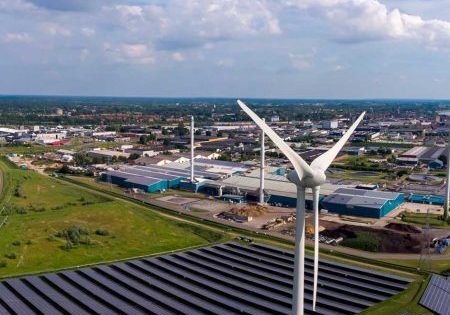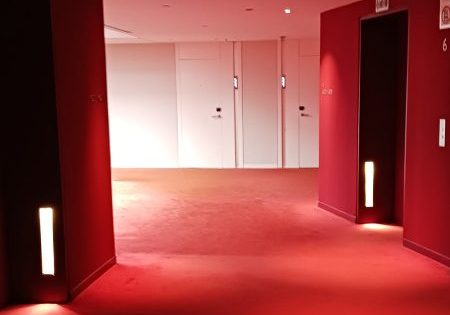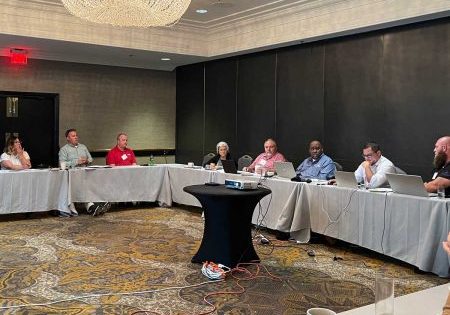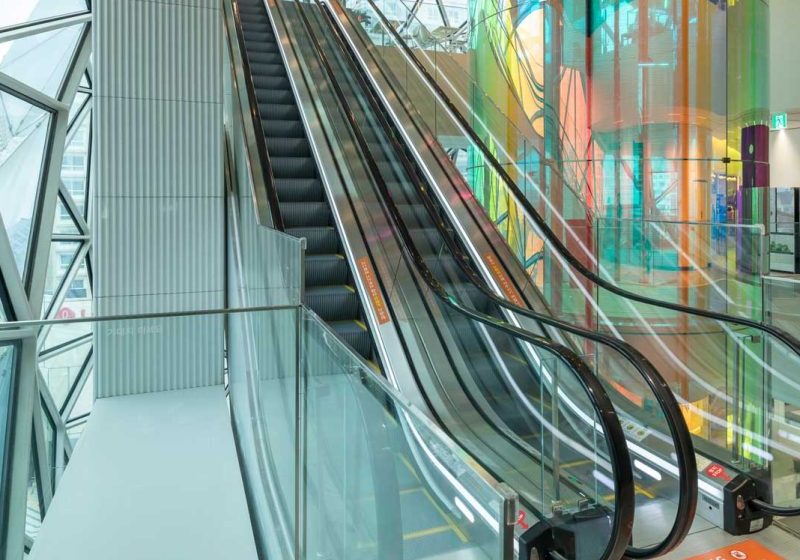Powering Up
Apr 6, 2023
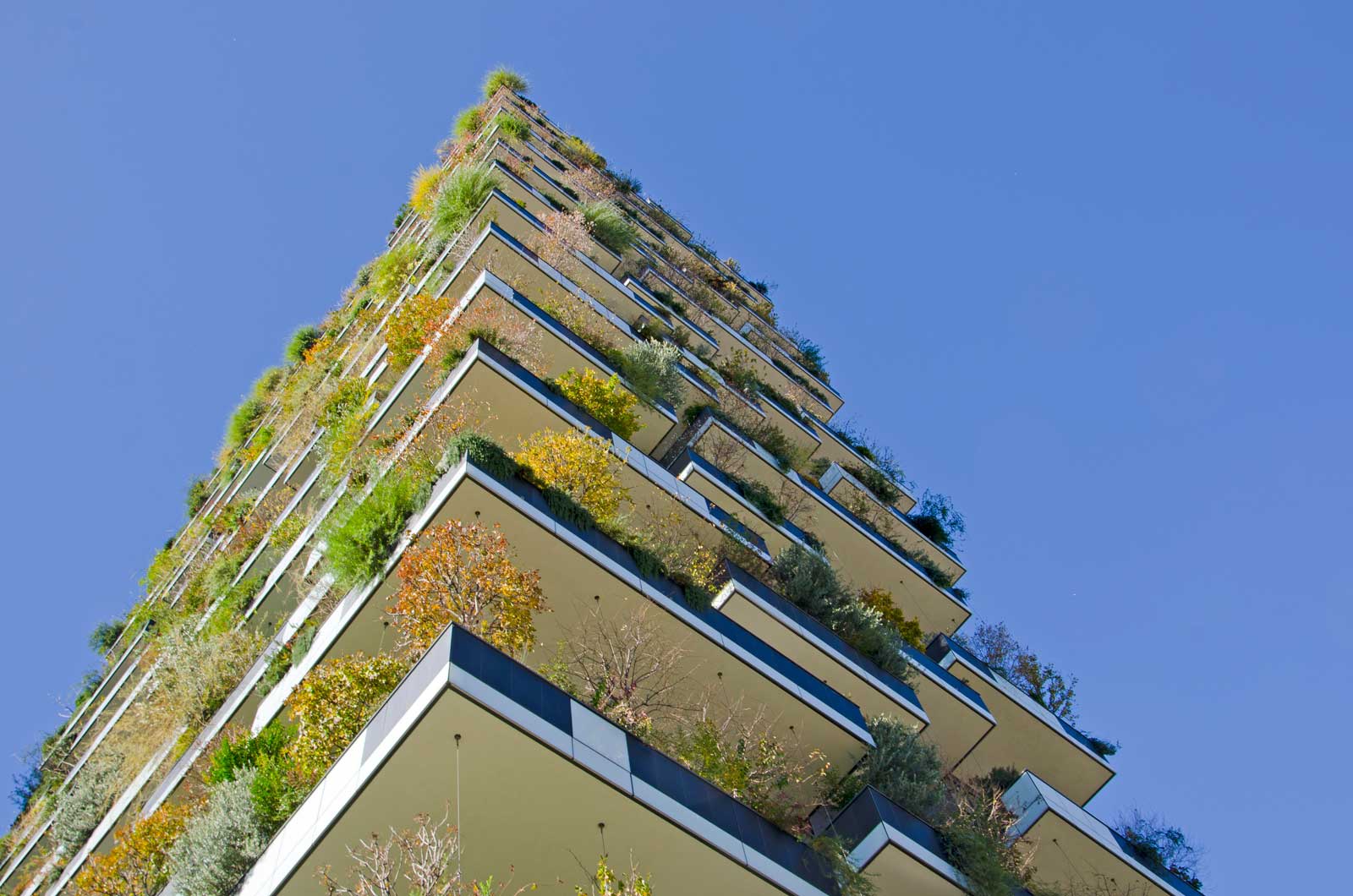
The race to improve energy efficiency and reduce carbon emissions in buildings is on, and the elevator industry is ready to lead the way.
by Philip W. Grone
Sustainability in the built environment rests on managing energy consumption with the aim of reducing demand and diversifying energy sources. According to the 2018 Commercial Buildings Energy Consumption Survey (CBECS), an estimated 5.9 million commercial buildings in the U.S. consumed 6.9 quadrillion British thermal units (BTUs) of energy at a cost of US$141 billion. Electricity and natural gas were the main energy sources.
Decarbonizing the built environment is an urgent need recognized at all levels of government. A year after the 2018 CBECS was released, NYC enacted Local Law 97. That law required buildings larger than 25,000 ft2 (nearly 50,000 buildings) to significantly reduce their carbon emissions. Buildings account for two-thirds of greenhouse gas emissions in NYC, a common sustainability problem confronting municipalities and communities across the country.
In December 2022, the Biden Administration significantly advanced Federal sustainability efforts when it announced the first-ever Federal Building Performance Standard, which sets an ambitious goal to cut energy use by 30% in buildings owned by the Federal government by 2030. This aligns with the Administration’s goal of achieving net-zero energy in all federal buildings by 2045.
The path to reducing greenhouse gas emissions (GHG) is not without challenges. A 2021 study produced by The Brookings Institution, noted that the three top GHG-emitting industries are also the most difficult to decarbonize — chemicals, cement and steel. Buildings will continue to be built with cement and the elevators within those buildings will continue to be built with steel, leaving some to wonder exactly how much progress can really be made in reducing GHG emissions in buildings. For the building transportation industry, it starts with a bit of ingenuity.
Energy Asset
Elevators and escalators consume anywhere from 2-8% of a building’s energy, but component and system modifications both inside and outside the cabin are transforming elevators from energy consumers to energy producers — a transformation that started roughly 40 years ago.
In the 1990s, machine-room-less (MRL) technology was introduced that allowed the machinery to be housed in the elevator shaft rather than requiring a rooftop-based machine room with separate heating and cooling in many applications. Featuring a gearless traction design, MRL elevators can significantly reduce energy consumption, depending on the number of landings, load, speed of travel and number of trips per a given time period.
The implementation of regenerative drives on counterweighted elevators took it one step further by returning used energy, normally dissipated as heat, back to the building’s electrical system to power other building systems, such as lighting or air conditioning. The elevator system can regenerate energy during light elevator loads on ascent or heavy loads on descent. Regenerative drives also reduce power consumption during peak periods.
Another energy asset for elevators is the inclusion of digital controllers with standby mode that puts an elevator into sleep mode when not in use, reducing energy consumption. Replacing elevator car lighting and pushbuttons with LED lights is another small, but important, step toward better energy efficiency, as well.
The energy advancements made by the building transportation industry have contributed to elevators finally being considered for LEED material credits via LEED v4, a significant victory for the industry and a springboard for its next big sustainability challenge.
The Quest for Carbon-Neutral
To address climate change and to limit global warming to 1.5°C in alignment with the 2015 Paris Agreement, some within the building transportation industry are focusing on their contributions to Scope 1 and 2 emissions, with many of the industry’s leaders targeting a 50% reduction in Scope 1 and Scope 2 emissions by 2030.
Scope 1 covers direct emissions from owned or controlled sources, while Scope 2 covers indirect emissions from the generation of purchased electricity, steam, heating and cooling consumed. Scope 3, a focal point for the industry in the near future, includes all other indirect emissions that occur in a company’s value chain.
The energy advancements made by the building transportation industry have contributed to elevators finally being considered for LEED material credits via LEED v4, a significant victory for the industry and a springboard for its next big sustainability challenge.
Renewable energy is a key way the industry is addressing Scope 1 and 2 with the inclusion of natural power sources like solar energy, which can be used to power company-owned facilities such as manufacturing plants, factories, corporate buildings and test towers. Companies can also purchase green energy from utility providers. Beyond building transportation, the industry is also focusing on transportation between buildings with electric vehicles starting to be incorporated into the service fleet.
A Healthy Approach
The building transportation industry is, fittingly, on its own journey as it seeks to achieve net-zero carbon emissions by 2050, and while that deadline remains nearly 30 years away, the foundation was laid years ago and is being built upon now. From manufacturing and modernization to service and sales, elevator companies are incorporating the necessary sustainable products and practices to ensure the safety, health and wellness of every person … and the environment.
Get more of Elevator World. Sign up for our free e-newsletter.




